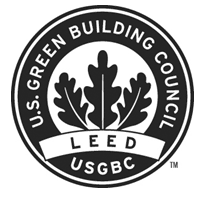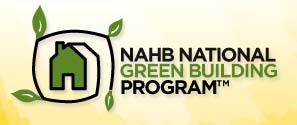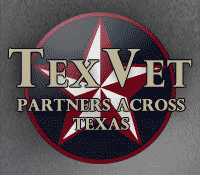
Benefits of Building ENERGY STAR® Certified New Homes
Today everyone is concerned about rising energy costs. By partnering with ENERGY STAR, builders provide their customers a comfortable home that uses less energy. Homeowners appreciate saving money on their energy bills. And builders appreciate fewer callbacks and complaints.
As ENERGY STAR partners, builders can also gain the following advantages:
Market Differentiation and Recognition
Partnering with ENERGY STAR distinguishes builders as leaders in energy-efficient construction and environmental stewardship, providing valuable peer and public recognition that translates into market advantage because consumers increasingly ask for ENERGY STAR.
Enhanced Customer Satisfaction
The energy-efficient features built into ENERGY STAR qualified homes increase comfort and satisfaction, resulting in fewer homeowner complaints and callbacks.
Increased Revenue
The built-in energy-saving features can increase revenue on ENERGY STAR qualified homes. In addition, the projected energy savings may allow a buyer to afford additional upgrades, further increasing the builder’s profit.
Program Flexibility
Builders choose from "tried and true" energy efficiency features to meet ENERGY STAR guidelines. The variety of features available can be integrated with consumer preferred designs, layouts, or option packages.
EPA Support for Builders
As ENERGY STAR partners, builders can use EPA-produced marketing resources and technical resources at no cost. Some examples include:
- ENERGY STAR Logo Marks
- Partner Locator listing, which links customers to ENERGY STAR partners
- Consumer Brochures, Fact Sheets, and Sales Toolkit
- Outreach Partnership
- Awards and Recognition
What Makes a Home ENERGY STAR?
- An ENERGY STAR home meets EPA guidelines for energy efficiency—and consistently exceeds standard home performance. ENERGY STAR qualified homes are at least 30% more energy efficient than homes built to the National Model Energy Code or 15% more efficient than the state energy code, whichever is more rigorous.
- An ENERGY STAR home has important energy-efficient features such as: effective insulation levels, energy-efficient heating and cooling equipment, tight ducts, tight construction and high-performance windows.
- An ENERGY STAR home is third-party verified using one of two methods, both requiring Energy Smart’s on-site inspections and diagnostics:
- An Energy Smart home energy rater, using the Home Energy Rating System (HERS), evaluates home plans and specifications to pinpoint specific, cost-effective improvements needed to qualify a home for the label.
- Builder Option Packages offer a set of construction specifications for a specific climate zone that will enable a home to qualify for the label.
Why is ENERGY STAR Good for Your Customers?
- Lower Utility Costs - compared with standard homes, ENERGY STAR qualified homes use substantially less energy for heating, cooling, and hot water heating. Homeowners can save $200–$400 annually on their utility bills.
- Quieter/More Comfortable Homes - The energy-efficient features of ENERGY STAR qualified homes keep out excessive heat, cold, and noise and ensure consistent temperatures between and across rooms—making these homes more comfortable.
- Healthier Homes - Tightly constructed homes and ductwork can more effectively block dust, moisture, pollens, pests, and other pollutants from entering homes and wall assemblies, improving indoor air quality.
- Advanced Technology - Consumers are increasingly attuned to the benefits of new technology. With the ENERGY STAR label, they can be assured their new homes use the latest in energy-efficient technologies to improve performance while lowering monthly costs.
- Good Investments - The features and performance advantages associated with a home that has earned the ENERGY STAR can often translate into higher resale value.
- Environmental Protection - Because ENERGY STAR qualified homes use less energy, they help reduce pollution—an added benefit for today’s environmentally conscious homebuyers.
Energy Smart is proud to provide rating services to qualify new homes for the ENERGY STAR® label. ENERGY STAR qualified new homes are substantially more energy efficient than homes built to the minimum code requirements. Even in states with more rigorous energy codes, the U.S. EPA ensures that ENERGY STAR remains the symbol for truly energy-efficient performance. These homes are good for businesses, consumers, and the environment.

Why have so many builders embraced the Environments For Living program? Some builders' top priority is to differentiate themselves by constructing homes that go beyond conventional building codes. Others recognize the potential for building science to reduce claims and callbacks, and increase customer satisfaction. But virtually all builders have chosen the Environments For Living program because they offer a complete set of solutions. There are many energy- and green-building programs builders can choose from today. Here are a few reasons why so many have chosen Environments For Living:
Flexibility. The Environments For Living program is performance based and product neutral. In other words, you're free to use any manufacturer whose products meet the program requirements. You also have the flexibility to customize the program to suit your homes, your local market, your local climate and your business needs. The’re also compatible with other programs and can assist you in achieving other certifications.
Choice. The Environments For Living program has several energy levels to choose from and a flagship level – the Environments For Living Certified Green program. You can select the program and energy level that best fits your needs; but, no matter which you choose, they can help you deliver a home that goes beyond the ordinary.
Turn-key. Environments For Living doesn’t just provide you with a checklist. The program was designed with the needs of all builders in mind, from custom builders to mid-size and large production builders. Builders want a program that delivers efficiency and economies of scale, backed by a professional organization. EFL’s turn-key services include training, a national plan review center, and an extensive network for field certification and testing. EFL can even assist in identifying companies that can install products that meet the program requirements.
Guaranteed. By providing your homeowners with Masco Home Services' limited guarantees* on comfort and heating and cooling energy use, you have not only a powerful marketing tool but a tangible promise from you to your homebuyers that you have committed to build your homes to a higher standard.

LEED - The Leadership in Energy and Environmental Design
LEED is a third-party certification program and the nationally accepted benchmark for the design, construction and operation of high performance green buildings. LEED gives building owners and operators the tools they need to have an immediate and measurable impact on their buildings’ performance. LEED promotes a whole-building approach to sustainability by recognizing performance in five key areas of human and environmental health: sustainable site development, water savings, energy efficiency, materials selection and indoor environmental quality.
Who uses LEED?
Architects, real estate professionals, facility managers, engineers, interior designers, landscape architects, construction managers, lenders and government officials all use LEED to help transform the built environment to sustainability. State and local governments across the country are adopting LEED for public-owned and public-funded buildings; there are LEED initiatives in federal agencies, including the Departments of Defense, Agriculture, Energy, and State; and LEED projects are in progress in 41 different countries, including Canada, Brazil, Mexico and India.
How is LEED Developed?
LEED Rating Systems are developed through an open, consensus-based process led by LEED committees. Each volunteer committee is composed of a diverse group of practitioners and experts representing a cross-section of the building and construction industry. The key elements of USGBC's consensus process include a balanced and transparent committee structure, technical advisory groups that ensure scientific consistency and rigor, opportunities for stakeholder comment and review, member ballot of new rating systems, and a fair and open appeals process.

Through the National Green Building Program, the National Association of Home Builders is helping its members move the practice of green building into the mainstream. Energy efficiency, water and resource conservation, sustainable or recycled products, and indoor air quality are increasingly incorporated into the everyday process of home building.
Building green means incorporating environmental considerations and resource efficiency into every step of the home building and land development process to minimize environmental impact. That means that during the design, construction, and operation of a home, the home's overall impact on the environment is taken into account.
Most builders are using green building practices in their homes as part of their current standard practices; ENERGY STAR® windows and appliances, recycled content materials, and water-conserving fixtures are all important parts of a green built home. To move to the next step of sustainable building, the builder should consider a whole-house systems approach. The home is composed of several independent components which, when planned and fully considered, can work together to increase performance and efficiency. For example, making a home's building envelope tighter through air sealing and quality building techniques can affect the way the builder designs the home's ventilation system. It is through such a forward-thinking process that builders can gain cost efficiencies.
The NAHB Model Green Home Building Guidelines or the ANSI approved ICC 700-2008 National Green Building Standard are ideal places to start. Each consist of a variety of line items that a builder can choose from in creating a green home, organized into seven overarching sections, or guiding principles. The Guidelines reference Lot Design, Resource Efficiency, Energy Efficiency, Indoor Environmental Quality, Homeowner Education, and Global Impact. The Standard addresses these same areas, but also provides guidance for multifamily construction, remodeling and renovation projects and site development for the creation of green subdivisions. Knowing the background that went into determining the line items and their relative value, the builder can review the criteria in each of the areas to determine which practices they could integrate into their home building processes. Additionally, because home builders differ in their relative knowledge and comfort level with green building concepts, both the Standard and the Guidelines offer thresholds to delineate different levels of effort. The first level of green building, Bronze, features items that demonstrate the builder paid special attention to a project's environmental impact. The next two levels of green home building, Silver and Gold, include additional line items that place increasingly greater emphasis on green practices. The Standard also introduced a new level, Emerald, to denote the pinnacle of achievement in residential green construction. Learn about the points needed to reach each level of green building according to the Standard and the Guidelines.

The GHBA Green Building Initiative (GBI) is a voluntary green building program available to all GHBA builders. The program serves the greater Houston region by promoting healthy, energy and water efficient homes that reduce utility costs and use recycled, renewable and/or reclaimed materials that protect the environment.
In 2009, the Green Building Initiative had more than 40 participating builders that constructed approximately 8,000 green homes compliant with the program guidelines.
GHBA continues to participate in the green building movement, evident by the increasing number of GBI builder members and homes built to the GHBA Green Building guidelines throughout the years. Education and marketing are essential to the program’s success. In 2010, the committee plans to focus its efforts on not only builders and salespeople, but also realtors, and most importantly consumers so they may learn and understand the benefits of owning a green home.

Building America
Building America is an industry-driven research program, sponsored by the U.S. Department of Energy, designed to accelerate the development and adoption of advanced building energy technologies in new and existing homes.
Research Goals
Building America works with Research Teams made up of key members of the building industry in the production of advanced residential buildings. These teams conduct systems engineering research to develop technologies and strategies that achieve the following goals:
- Produce homes on a community scale that use on average 40% to 100% less source energy
- Integrate onsite power systems leading to zero energy homes, that produce as much energy as they use, by 2020
- Improve indoor air quality and comfort
- Help home builders reduce construction time and waste
- Implement innovative energy- and material-saving technologies
- Improve builder profitability
- Provide new product opportunities to manufacturers and suppliers
- Dramatically increase the energy efficiency of existing homes.
Successful technology packages are chosen based on overall, whole-house cost and performance assessments, allowing the Building America teams to achieve performance goals with little or no increase in home ownership costs.
Improved Home Features
The Building America teams work with builders to achieve the desired efficiency goals. They use a whole-house, systems engineering approach to select the least costly and highest value home features including:
- Climate-specific designs
- Super efficient walls, foundations, windows, and roofs
- Passive solar heating and cooling
- State-of-the-art heating, cooling, hot water, appliances, and lighting systems
- Solar thermal and solar electric systems
- Moisture resistant construction techniques.
Benefits for Builders and Developers
As a developer or builder, constructing homes that are better designed and more energy-efficient will help your business through:
- Enhanced competitive advantage in the marketplace by offering a unique, beneficial product
- Cost savings from making the best materials and equipment choices and from less construction waste
- Reduced risks, increased productivity, and fewer callbacks
- Improved building performance
- Greater profit margins on energy efficiency and other upgrades
- Increased customer satisfaction and referrals.
- Through proper design and selecting the right materials, cost trade-offs allow you to offer these higher quality homes with little or no additional operating cost for the homeowner.
Benefits for Homeowners
Customers are very satisfied with homes built using Building America strategies because they offer:
- Reduced costs-Building America homes use less energy which translates into large reductions in utility bills
- Improved comfort-Building America homes are constructed to reduce temperature fluctuations and room-to-room variations
- Higher quality-Building America homes utilize strategies and materials that improve the overall structure and operation
- Durability-Building America homes are designed to resist long term degradation caused by weather and age
- Environmental sustainability-Building America homes save energy and reduce pollution.

What is REScheck™?
REScheck™, developed and distributed by the Department of Energy, is a recognized tool for easily showing compliance with national model energy codes. Builders, designers and inspectors use REScheck™ to demonstrate compliance with the Texas building energy performance standards as outlined in the 2000 International Energy Conservation Code.
How does the REScheck™ Software Work?
The REScheck™ software allows a trade-off approach that permits the builder to trade energy efficiency in one component against decreased energy efficiency in another component. Typically, this is less restrictive than prescriptive approaches because components that exceed the requirements can compensate for those that do not meet the code.
What Inspections are Required?
Energy Smart provides a two-stage inspection program designed to demonstrate that buildings are built in accordance with the International Energy Conservation Code and International Residential Code.
- Stage one - prior to sheetrock, verification of air infiltration controls, R-value and proper installation of insulation, proper duct installation, R-values of duct insulation, NFCR labeling of fenestration products including SHGC ratings and U-factors and verification of approved recessed lighting cans.
- Stage two - final inspection, verification of insulation depth, size and SEER rating of air conditioning units, proper sealing around boxes and fixtures, U-factors of doors and weatherstripping.
Energy Smart can assist the builder in complying with the State of Texas energy code.
- Energy Smart staffs ICC certified residential energy inspectors and plan examiners to assist builders in complying with the code.
- Energy Smart personnel are certified to perform plan reviews and inspections.
- Energy Smart offers plan analysis through a trade-off approach that uses the REScheck™ software approved by the U.S. Department of Energy.
- Energy Smart provides consulting services to ensure builders can better meet the terms of the code.
- Energy Smart offers third party plan analysis and inspections approved by local municipalities.

The Veterans Housing Assistance Program (VHAP) provides financing up to $325,000 toward the purchase of a home to qualified Texas veterans.
There is no maximum sales price with the VHAP; however, the VLB can only loan up to $325,000 towards the purchase. The VHAP must be originated in conjunction with Federal Housing Administration (FHA), Veterans Administration (VA), or conventional financing. Loans must be originated by a participating lender.
All new-construction homes financed through the Texas Veterans Housing Assistance Program (VHAP) must meet the U.S. Environmental Protection Agency's (EPA) guidelines for ENERGY STAR® qualified homes. This includes completion of the Thermal Bypass Checklist, by a certified Home Energy Rating System (HERS) Rater, prior to wallboard being installed.



